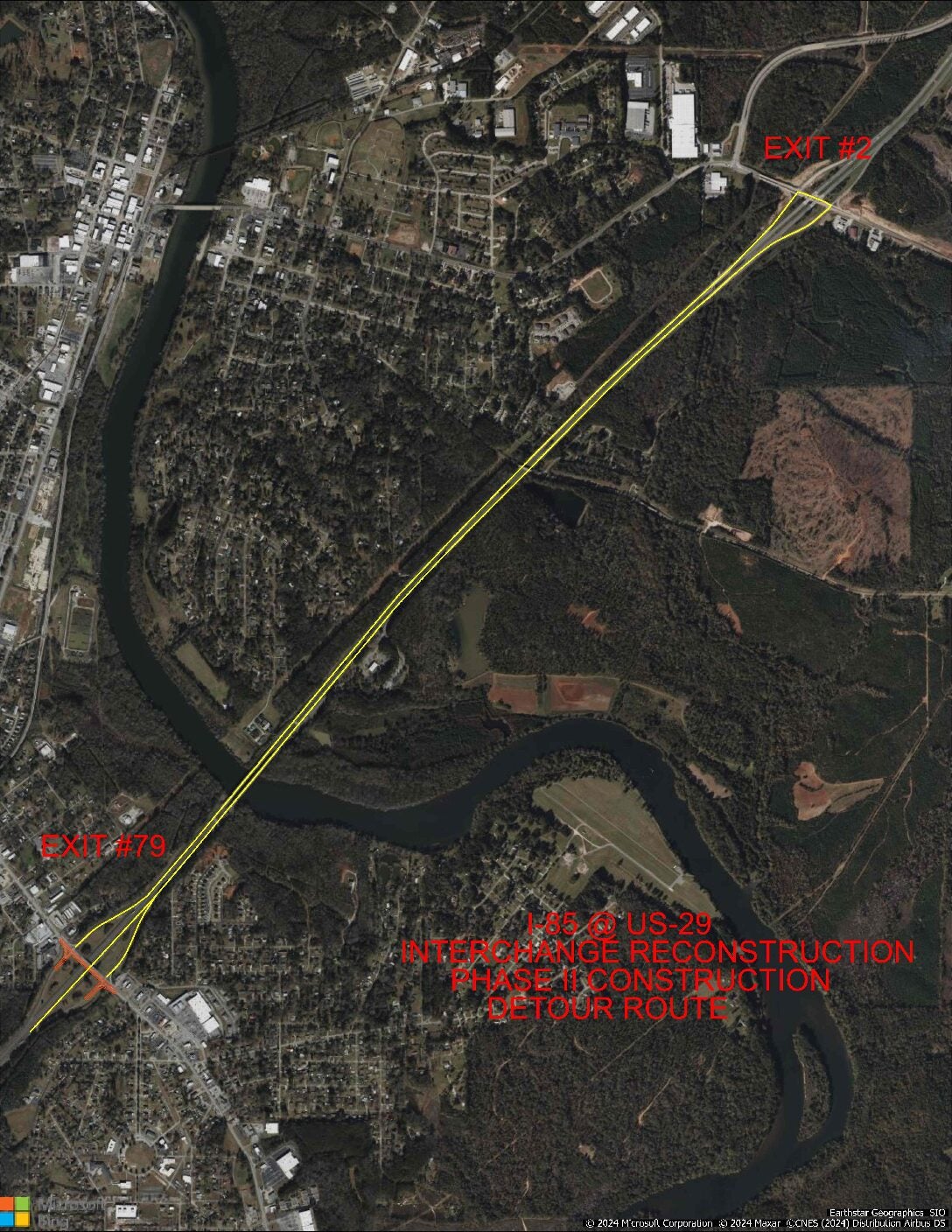Alabama Historian Mike Bunn talks early years in CVHS virtual program
Published 10:00 am Tuesday, January 25, 2022
|
Getting your Trinity Audio player ready...
|
Mike Bunn, a noted historian on Alabama’s early years, was the guest speaker for the Chattahoochee Valley Historical Society’s first quarterly program of the new year. It took place via ZOOM on Sunday afternoon. CVHS members from Chambers and Troup counties participated in the online program along with people with local ties who now live in Peachtree City, Georgia and Virginia.
Bunn is the director of the Historic Blakeley State Park in Spanish Fort. He has written numerous books about Alabama in the first half of the nineteenth century. On Sunday, he discussed his new book, “Fourteenth Colony: The Forgotten Story of the Gulf South During America’s Revolutionary Era.”
“It wasn’t literally a fourteenth colony,” he said. “I just wanted to let people know there is something extra about British West Florida. There was definitely a gulf coast connection to the Revolutionary War period.”
Bunn explained how England gained a foothold on the Gulf Coast with the Treaty of Paris in 1763, which ended the Seven Years War, which was widely known in America as the French and Indian War.
The French expansion into the Ohio Valley resulted in armed conflict with Britain and its North American colonies in the 1750s. France and its Native American allies were winning in the early going, but Britain doubled down on its efforts and won decisively. By 1760, the French had been expelled from Canada. With the Treaty of Paris some three years later, France lost all claims in Canada and gave Louisiana to Spain. Britain received what had been Spanish Florida, Upper Canada plus some French holdings overseas. The treaty ensured the colonial and maritime supremacy of Britain and strengthened the 13 American colonies by removing their European rivals to the north and south. Fifteen years later, French bitterness over the loss of most of their colonial empire contributed to their intervention in the American Revolution on the side of the American colonists.
Prior to the Seven Years War, France had a large presence in America’s heartland area between the Appalachians and the Rockies.
Britain’s victory in the war gave them two new colonies, British West Florida and British East Florida.
“They were on the same footing with the established ones,” Bunn said.
Included in British West Florida were the Florida panhandle and portions of the present-day states of Alabama, Mississippi and Louisiana.
The northern boundary was the 31st parallel, which still forms boundaries between Alabama and Florida and Louisiana and Mississippi.
“Colonial officials wanted the line to extend in the interior to the Tennessee line,” Bunn said. “They agreed to extend it to 32 degrees and 28 minutes.”
There’s a historical marker near Phenix City telling of the new boundary passing near that point.
Pensacola became the capital of British West Florida and Mobile its second important port city,
It was an unhealthy place to live at the time.
“As much as two-thirds of the garrisons at Pensacola or Mobile had either died or were very sick within the first few years of being there,” Bunn said. “They believed they were on the very frontier of the New World.”
In 1765, an early governor described the region as “the most disagreeable and unhealthy place in America.”
Malaria was a big problem, and communication and transportation were poor.
Early settlers struggled to find crops to grow. Most were subsistence farmers and made a living harvesting the tall, longleaf pine trees, which were much in demand in building sailing ships. They knew it would be crucial to be on good terms with the Native Americans of the region, who vastly outnumbered them at the time. Finding a way to trade with them was an important key.
“This was the start of the deerskin trade,” Bunn said. “It became a very lucrative trade for the British. Skins of white tail deer were much in demand in Europe. The British exported thousands of them. The Native Americans could get what they wanted in return.”
It was a very successful arrangement for a time, but eventually the deer population was hunted to near extinction. The collapse of the deerskin trade was a factor in the 1813-14 Creek War in what is now Alabama.
British West Florida grew in population in the 20-year period leading up to the Revolution. There were approximately 2,000 people living in the region in 1765. That number grew to approximately 5,500 by 1775.
The Revolutionary War period would once again change West Florida’s ownership. The major battles in the 1775-1781 war between Britain and its colonies were fought far away from the Gulf Coast. Britain had to maintain garrisons there, and that helped the American cause. For the most part, settlers of the region sat out the war.
“East Florida and West Florida were invited to attend the Continental Convention in 1776, but they declined,” Bunn said. “They were new colonies, and were more interested in getting along with their lives. They had heard about what was going on, but news was slow to reach them. The Revolutionary War was not a part of their everyday life. The British asked them to join their side, but they made it clear to them that they wanted to be left alone. The region was neither loyal to Britain or pro-rebellion.”
“New Orleans was under Spanish control at the time,” Bunn said. “They didn’t like the British and declared war on them but never allied with America.”
Nonetheless, Spain’s actions against Britain along the Gulf Coast aided the American cause.
General Bernardo de Galvez was the governor of Spanish Louisiana at the time. He was a skilled military man and led successful campaigns along the coast against the British. His forces captured four British-held forts along the Mississippi River and took Mobile and Pensacola.
The city of Galveston, Texas is named in his honor. There are statues of him in Pensacola and in Washington, D.C. but not much about him is in the U.S. history books.
As governor, his mission was to deal fairly with Louisiana’s French Creole population, promote commerce, fight smuggling, cultivate friendships with the Native Americans, build up the Spanish-speaking population and to take back what had been Spanish West Florida.
In his 1779 campaign along the Mississippi, Galvez captured 550 prisoners and two British ships. He quickly took Mobile, but it was a hard fight to take Pensacola in 1781. In fact, it was the longest campaign in the War of the Revolution. The Galvez campaign along the gulf coast tied down British troops that could have helped at the Battle of Yorktown, the critical battle that won the war for America.
Spain’s interest in maintaining West Florida waned in the coming years. There was much greater interest in expanding there by the young and growing United States. By 1797, the disputed territory between West Florida and Alabama and Mississippi had largely become part of U.S. territories. Portions of it were later annexed into Alabama, Mississippi and Louisiana. Florida was maintained by Spain until 1821; it became a U.S. state in 1845.
Copies of “Fourteenth Colony: The Forgotten Story of the Gulf South During America’s Revolutionary Era” are available on Amazon and at Barnes & Noble, Books A Million and at New South Books. Signed books are available at jamesmichaelbunn@gmail.com and mikebunn.net.
Moderator Charlie Powers asked Bunn if there were many Spanish colonials in West Florida when Britain gained possession of it in 1763. At that time, said Bunn, Mobile was mostly a French city and Pensacola mostly Spanish.
“The vast majority of people agreed to go along with the new leadership,” he said, “The places were more military forts than population centers.”
CVHS President Malinda Powers asked Bunn if the Native Americans benefited from British control of West Florida. “Yes,” he said. “The deerskin trade was very profitable for both parties. It eventually fell out of favor though. Europeans were more interested in other kinds of fur.”




